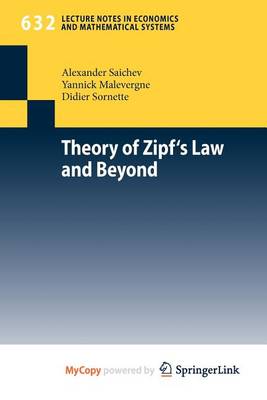Zipf's law is one of the few quantitative reproducible regularities found in e- nomics. It states that, for most countries, the size distributions of cities and of rms (with additional examples found in many other scienti c elds) are power laws with a speci c exponent: the number of cities and rms with a size greater thanS is inversely proportional toS. Most explanations start with Gibrat's law of proportional growth but need to incorporate additional constraints and ingredients introducing deviations from it. Here, we present a general theoretical derivation of Zipf's law, providing a synthesis and extension of previous approaches. First, we show that combining Gibrat's law at all rm levels with random processes of rm's births and deaths yield Zipf's law under a "balance" condition between a rm's growth and death rate. We nd that Gibrat's law of proportionate growth does not need to be strictly satis ed. As long as the volatility of rms' sizes increase asy- totically proportionally to the size of the rm and that the instantaneous growth rate increases not faster than the volatility, the distribution of rm sizes follows Zipf's law. This suggests that the occurrence of very large rms in the distri- tion of rm sizes described by Zipf's law is more a consequence of random growth than systematic returns: in particular, for large rms, volatility must dominate over the instantaneous growth rate.
- ISBN10 3642029477
- ISBN13 9783642029479
- Publish Date 5 November 2009
- Publish Status Withdrawn
- Out of Print 18 October 2014
- Publish Country US
- Imprint Springer
- Format Paperback (US Trade)
- Pages 184
- Language English
